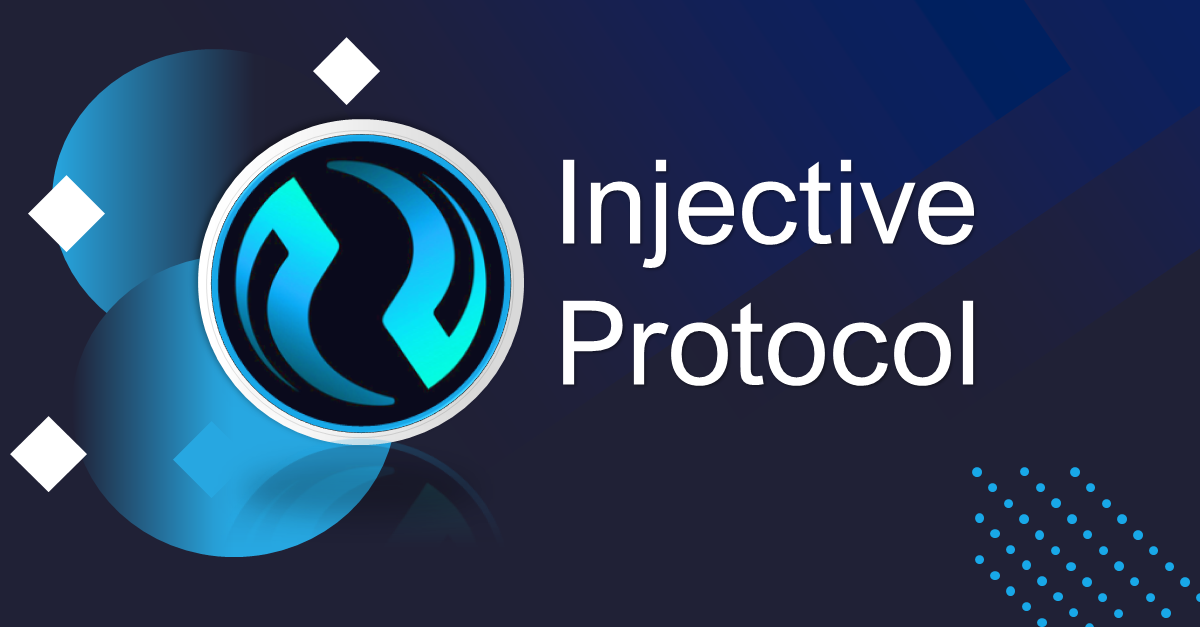Building a DEX on Injective: Crafting the Future of Finance
 Bikram Biswas
Bikram Biswas
Introduction
Embark on a thrilling odyssey into the heart of decentralized finance (DeFi) as you explore the boundless possibilities of crafting your very own decentralized exchange (DEX) on the Injective Protocol. This guide serves as your trusted compass, navigating you through the intricate landscape where innovation seamlessly intertwines with functionality. Join us on this exhilarating adventure, as we unravel the artistry and engineering behind building a DEX on Injective, shaping the future of finance. Get ready to chart new territories and redefine the landscape of decentralized exchanges. The odyssey begins now.
Chapter 1: Why Injective?
Introduction
Building a decentralized exchange (DEX) requires a solid foundation, and choosing the right protocol is paramount. Injective Protocol emerges as a compelling choice for developers venturing into the decentralized finance (DeFi) space. This chapter explores the key reasons to opt for Injective as the canvas for your DEX masterpiece.
The Ecosystem
Injective is more than just a protocol; it's a thriving ecosystem that beckons developers with open-source arms. The flexibility it offers becomes apparent when crafting financial applications, whether you're a seasoned developer or a newcomer to DeFi. The vibrant community surrounding Injective provides invaluable support and resources, making it an ideal environment for DEX projects.
Flexibility and Community Support
One of Injective's standout features is its flexibility. Developers enjoy the freedom to create and innovate within the protocol's framework. This flexibility extends to various aspects, including market creation, trading strategies, and user experiences. The Injective community, a diverse and collaborative network of developers and enthusiasts, contributes to a dynamic and supportive atmosphere. This sense of community becomes a powerful catalyst for creativity.
Open-Source Framework
Injective's open-source nature opens the door to a wealth of possibilities. Developers can delve into the protocol's codebase, understand its intricacies, and even contribute to its evolution. The transparency provided by open-source projects aligns with the ethos of decentralization, fostering trust among developers and users alike.
Chapter 2: Setting the Stage
Choose Your UI Framework
Imagine your DEX as a stage for financial interactions. To set the stage, the first step is configuring the user interface (UI) framework. The provided configuration details serve as a guide for developers to choose a UI framework aligned with their preferences. This decision influences the overall user experience, making it crucial for the success of the DEX.
API Clients and Environment Setup
Every performance needs actors, and in the world of DEX development, these actors are API clients. This chapter dives into the technicalities of setting up API clients for interaction with the Injective Chain and Indexer API. The Services.ts file serves as a script, introducing the necessary classes for a seamless connection to the testnet environment. This step lays the groundwork for subsequent interactions with the protocol.
Connect Users with Wallets
As the stage is set, the audience (users) must be brought into the performance. The @injectivelabs/wallet-ts package takes center stage, allowing users to connect their wallets seamlessly. This step is crucial, as it enables users to sign transactions on the Injective network, actively participating in the unfolding drama of decentralized finance.
In these initial chapters, the emphasis is on understanding why Injective is a preferred choice for DEX development and laying the technical groundwork for the journey ahead. The flexibility of the protocol, coupled with robust community support, sets the tone for an exciting exploration of DEX creation on Injective.
Chapter 3: Connecting Users to the DEX
Now that the stage is set and the actors are ready, the next chapter delves into connecting users with the decentralized exchange (DEX) on Injective. This crucial step involves establishing wallet connections, allowing users to seamlessly interact with the platform. The @injectivelabs/wallet-ts package takes center stage, offering a bridge between users and the world of decentralized finance (DeFi).
Wallet Strategies
In the realm of DeFi, wallet strategies play a pivotal role. The choice of wallet strategy determines how users connect, sign transactions, and engage with the DEX. With Injective's versatile wallet strategies, developers can accommodate various wallet providers, offering users a wide range of options. The ability to switch between active wallets provides flexibility and enhances the user experience.
Chain and Ethereum Integration
The chapter explores the integration of Injective with both the Injective Chain and Ethereum. Developers gain insights into handling different Chain IDs and Ethereum Chain IDs. The Wallet.ts file serves as the backstage guide, showcasing the seamless integration of wallet connections with the Injective protocol. The alchemyRpcEndpoint becomes the gateway, connecting users to the Ethereum Chain and enabling transactions.
Chapter 4: Fetching Market Data
With users connected, it's time to provide them with the heartbeat of the DEX – real-time market data. Chapter 4 focuses on querying spot and derivative markets, along with their respective order books. The Query.ts file steps into the spotlight, offering developers a toolkit for fetching essential market information.
Spot and Derivative Markets
Understanding the intricacies of spot and derivative markets is vital for creating a comprehensive DEX experience. The chapter walks developers through the process of fetching market data, providing insights into market structures, decimals, and tick sizes. The Query.ts file becomes the script, guiding developers on interacting with the Indexer API to access spot and derivative market details.
Order Books and Streaming
A DEX without real-time order books is like a play without dialogues. The chapter introduces developers to the art of streaming order book updates, ensuring users receive instantaneous information about market changes. Practical examples using the Indexer API showcase how to stream spot and derivative market order book updates, enhancing the responsiveness of the DEX.
In these chapters, the narrative shifts from the technical setup to the user experience, highlighting the importance of wallet connections and real-time market data. Developers gain a deeper understanding of the strategies to connect users seamlessly and provide them with a dynamic and responsive DEX environment on Injective.
Final Act: Unleashing the DEX Maestro
As the final act unfolds, you stand on the precipice of DEX innovation, armed with the knowledge and tools to transcend conventional boundaries. Now, it's time to channel your creativity, explore the vast landscape of possibilities, and bring forth a DEX that goes beyond mere functionality. Craft a masterpiece that not only operates seamlessly but captivates your audience with its visionary design.
Happy coding, Maestro of Decentralized Exchanges! 🎨 May your lines of code compose a symphony that echoes through the decentralized realms, shaping the future of finance. The stage is yours – take a bow, and let the DEX revolution begin!
Subscribe to my newsletter
Read articles from Bikram Biswas directly inside your inbox. Subscribe to the newsletter, and don't miss out.
Written by
